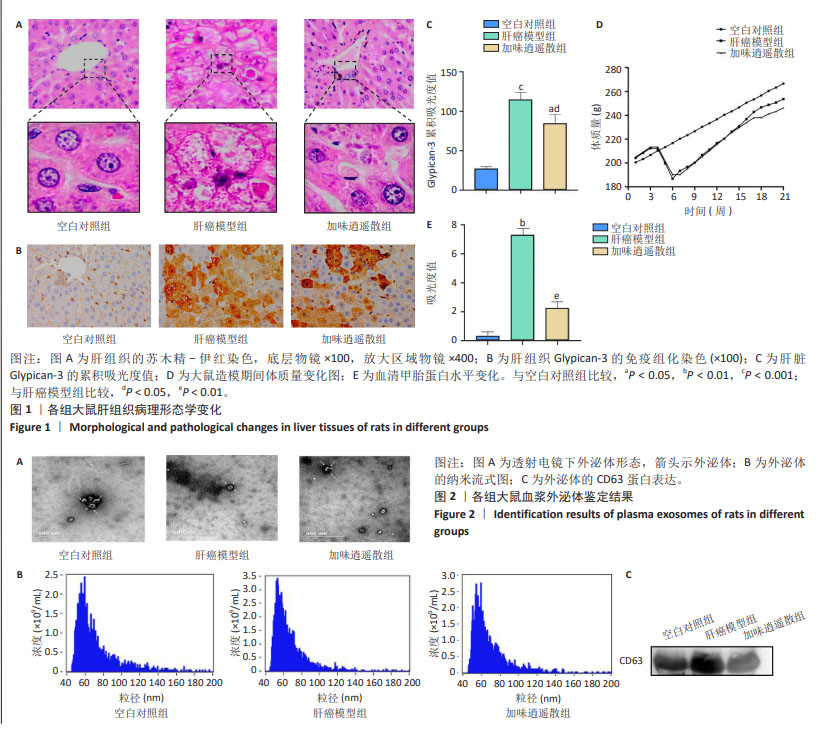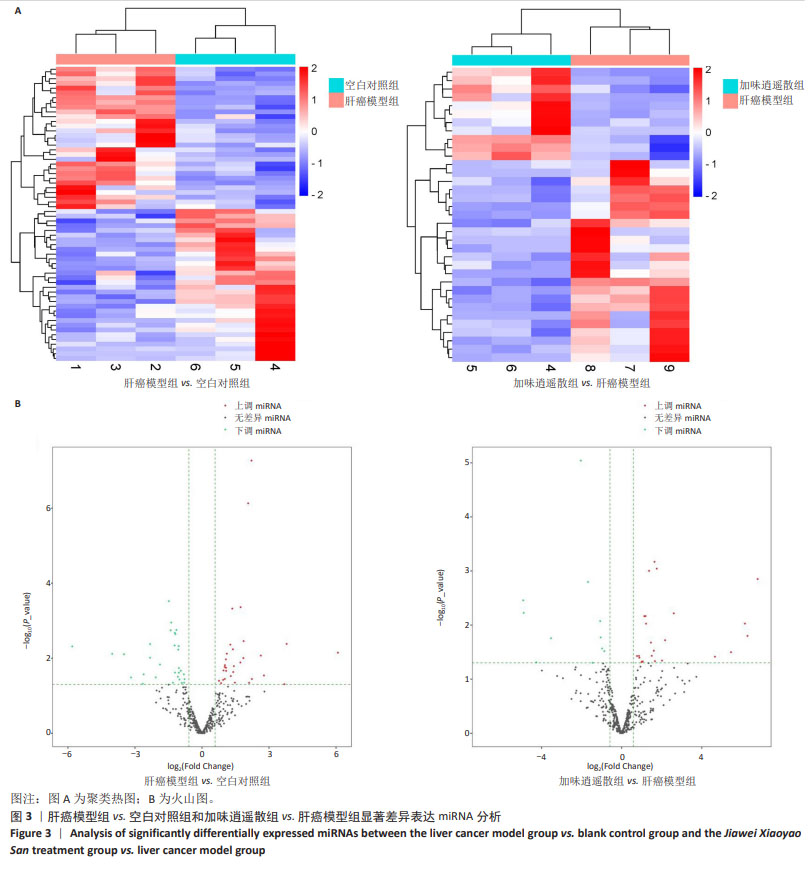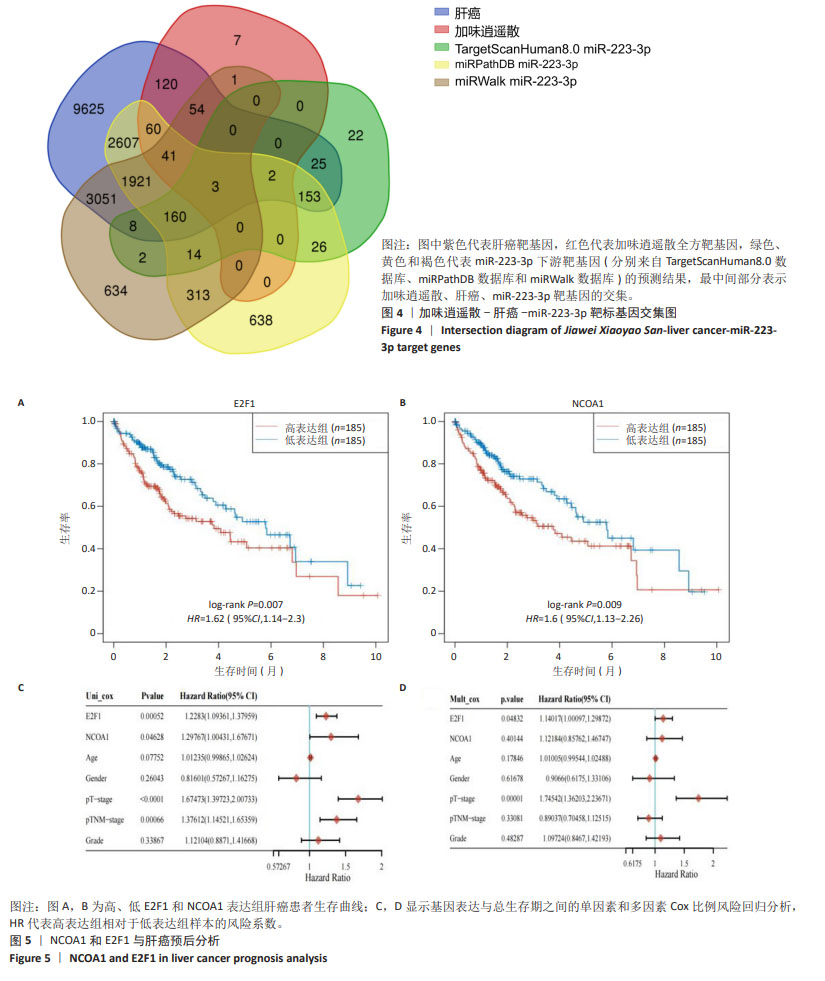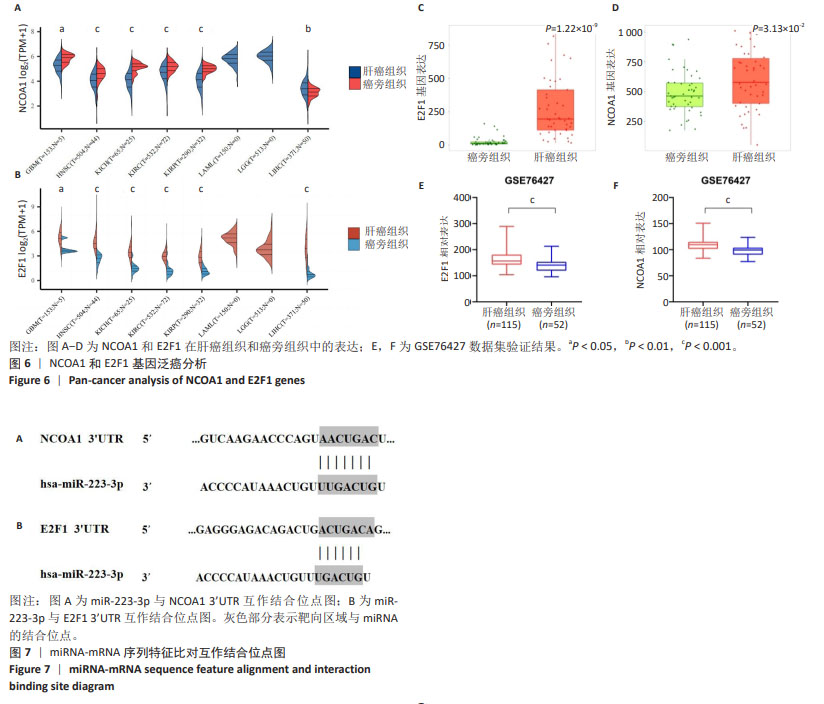[1] FOERSTER F, GAIRING SJ, ILYAS SI, et al. Emerging immunotherapy for HCC: A guide for hepatologists. Hepatology. 2022;75(6):1604-1626.
[2] ANWANWAN D, SINGH SK, SINGH S, et al. Challenges in liver cancer and possible treatment approaches. Biochim Biophys Acta Rev Cancer. 2020;1873(1):188314.
[3] MAKI H, HASEGAWA K. Advances in the surgical treatment of liver cancer. Biosci Trends. 2022;16(3):178-188.
[4] RUMGAY H, ARNOLD M, FERLAY J, et al. Global burden of primary liver cancer in 2020 and predictions to 2040. J Hepatol. 2022;77(6): 1598-1606.
[5] LIU J, REN L, LI S, et al. The biology, function, and applications of exosomes in cancer. Acta Pharm Sin B. 2021;11(9):2783-2797.
[6] XIE QH, ZHENG JQ, DING JY, et al. Exosome-Mediated Immunosuppression in Tumor Microenvironments. Cells. 2022; 11(12):1946.
[7] 任展志,麻瑶瑶,石玉群,等.不同来源外泌体在肝癌诊断与治疗中的研究进展[J].现代肿瘤医学,2023,31(12):2340-2346.
[8] NASERI Z, OSKUEE RK, JAAFARI MR, et al. Exosome-mediated delivery of functionally active miRNA-142-3p inhibitor reduces tumorigenicity of breast cancer in vitro and in vivo. Int J Nanomedicine. 2018;13: 7727-7747.
[9] REZAEI R, BAGHAEI K, AMANI D, et al. Exosome-mediated delivery of functionally active miRNA-375-3p mimic regulate epithelial mesenchymal transition (EMT) of colon cancer cells. Life Sci. 2021;269: 119035.
[10] LIN Q, ZHOU CR, BAI MJ, et al. Exosome-mediated miRNA delivery promotes liver cancer EMT and metastasis. Am J Transl Res. 2020;12(3): 1080-1095.
[11] PAN JH, ZHOU H, ZHAO XX, et al. Role of exosomes and exosomal microRNAs in hepatocellular carcinoma: Potential in diagnosis and antitumour treatments (Review). Int J Mol Med. 2018;41(4):1809-1816.
[12] KALLURI R. The biology and function of exosomes in cancer. J Clin Invest. 2016;126(4):1208-1215.
[13] WU Z, ZENG Q, CAO K, et al. Exosomes: small vesicles with big roles in hepatocellular carcinoma. Oncotarget. 2016;7(37):60687-60697.
[14] 温小雨,孙玉浩,李卓娴,等.加味逍遥散治疗肝癌并发抑郁症模型大鼠的网络药理学及蛋白质组学分析[J].中国组织工程研究, 2022,26(32):5132-5142.
[15] 黄继汉,黄晓晖,陈志扬,等.药理试验中动物间和动物与人体间的等效剂量换算[J].中国临床药理学与治疗学,2004,9(9):1069-1072.
[16] NIU Q, WANG T, WANG Z, et al. Adipose-derived mesenchymal stem cell-secreted extracellular vesicles alleviate non-alcoholic fatty liver disease via delivering miR-223-3p. Adipocyte. 2022;11(1):572-587.
[17] VILLANUEVA A. Hepatocellular Carcinoma. N Engl J Med. 2019;380(15): 1450-1462.
[18] 程荣菲,武哲丽.原发性肝癌虚、郁、痰、瘀、毒病机探讨[J].山东中医杂志,2014,33(10):804-806.
[19] AN S, ZHANG D, ZHANG Y, et al. GPC3-targeted immunoPET imaging of hepatocellular carcinomas. Eur J Nucl Med Mol Imaging. 2022;49(8): 2682-2692.
[20] ZHOU F, SHANG W, YU X, et al. Glypican-3: A promising biomarker for hepatocellular carcinoma diagnosis and treatment. Med Res Rev. 2018;38(2):741-767.
[21] NISHIDA T, KATAOKA H. Glypican 3-Targeted Therapy in Hepatocellular Carcinoma. Cancers (Basel). 2019;11(9):1339.
[22] LIU Z, PU Y, BAO Y, et al. Investigation of Potential Molecular Biomarkers for Diagnosis and Prognosis of AFP-Negative HCC. Int J Gen Med. 2021; 14:4369-4380.
[23] LUO P, WU S, YU Y, et al. Current Status and Perspective Biomarkers in AFP Negative HCC: Towards Screening for and Diagnosing Hepatocellular Carcinoma at an Earlier Stage. Pathol Oncol Res. 2020;26(2):599-603.
[24] 李瑞生.肝郁脾虚因素对二乙基亚硝胺诱发大鼠实验性肝癌影响的研究[D].北京:北京中医药大学,2002.
[25] 周文斌,郑越,尚佳,等.二乙基亚硝胺诱导肝细胞癌模型鼠肠道微生态研究[J].浙江大学学报(医学版),2022,51(4):438-453.
[26] WANG YJ, XU HY, HUO XH, et al. Multi-stress accelerated liver cancer progression in rats treated with diethylnitrosamine. Chin Med J (Engl). 2021;134(14):1762-1764.
[27] KRISHNAN GS, RAJAGOPAL V, ANTONY JOSEPH SR, et al. In vitro, In silico and In vivo Antitumor Activity of Crude Methanolic Extract of Tetilla dactyloidea (Carter, 1869) on DEN Induced HCC in a Rat Model. Biomed Pharmacother. 2017;95:795-807.
[28] CHEN T, DAI X, DAI J, et al. AFP promotes HCC progression by suppressing the HuR-mediated Fas/FADD apoptotic pathway. Cell Death Dis. 2020;11(10):822.
[29] GUPTA C, VIKRAM A, TRIPATHI DN,et al. Antioxidant and antimutagenic effect of quercetin against DEN induced hepatotoxicity in rat. Phytother Res. 2010;24(1):119-128.
[30] FU Y, URBAN DJ, NANI RR, et al. Glypican-3-Specific Antibody Drug Conjugates Targeting Hepatocellular Carcinoma. Hepatology. 2019; 70(2):563-576.
[31] DENZER K, KLEIJMEER MJ, HEIJNEN HF, et al. Exosome: from internal vesicle of the multivesicular body to intercellular signaling device. J Cell Sci. 2000;113 Pt 19:3365-3374.
[32] VALADI H, EKSTRÖM K, BOSSIOS A, et al. Exosome-mediated transfer of mRNAs and microRNAs is a novel mechanism of genetic exchange between cells. Nat Cell Biol. 2007;9(6):654-659.
[33] CORREIA DE SOUSA M, GJORGJIEVA M, DOLICKA D, et al. Deciphering miRNAs’ Action through miRNA Editing. Int J Mol Sci. 2019;20(24):6249.
[34] NIU X, WEI N, PENG L, et al. miR-34a-5p plays an inhibitory role in hepatocellular carcinoma by regulating target gene VEGFA. Malays J Pathol. 2022;44(1):39-52.
[35] BASHIR AO, EL-MESERY ME, ANWER R, et al. Thymoquinone potentiates miR-16 and miR-375 expressions in hepatocellular carcinoma. Life Sci. 2020;254:117794.
[36] KRIVOSOVA M, ADAMCAKOVA J, KAADT E, et al. The VEGF protein levels, miR-101-3p, and miR-122-5p are dysregulated in plasma from adolescents with major depression. J Affect Disord. 2023;334:60-68.
[37] LI S, CHEN Z, ZHOU R, et al. Hsa_circ_0048674 facilitates hepatocellular carcinoma progression and natural killer cell exhaustion depending on the regulation of miR-223-3p/PDL1. Histol Histopathol. 2022;37(12): 1185-1199.
[38] HANEKLAUS M, GERLIC M, KUROWSKA-STOLARSKA M, et al. Cutting edge: miR-223 and EBV miR-BART15 regulate the NLRP3 inflammasome and IL-1β production. J Immunol. 2012;189(8):3795-3799.
[39] 戚欣,王会子,陈旭东,等.miR-223-3p通过靶向RAC1调控肝细胞癌SMMC-7721细胞的增殖和凋亡[J].中国肿瘤生物治疗杂志, 2020,27(6):664-670.
[40] PRATEDRAT P, CHUAYPEN N, NIMSAMER P, et al. Diagnostic and prognostic roles of circulating miRNA-223-3p in hepatitis B virus-related hepatocellular carcinoma. PLoS One. 2020;15(4):e0232211.
[41] ZHANG R, ZHANG LJ, YANG ML, et al. Potential role of microRNA‑223‑3p in the tumorigenesis of hepatocellular carcinoma: A comprehensive study based on data mining and bioinformatics. Mol Med Rep. 2018; 17(2):2211-2228.
[42] WONG VC, WONG MI, LAM CT, et al. Hallmark microRNA signature in liquid biopsy identifies hepatocellular carcinoma and differentiates it from liver metastasis. J Cancer. 2021;12(15):4585-4594.
[43] FANG Z, LIN M, LI C, et al. A comprehensive review of the roles of E2F1 in colon cancer. Am J Cancer Res. 2020;10(3):757-768.
[44] CHUN JN, CHO M, PARK S, et al. The conflicting role of E2F1 in prostate cancer: A matter of cell context or interpretational flexibility? Biochim Biophys Acta Rev Cancer. 2020;1873(1):188336.
[45] FOUAD S, HAUTON D, D’ANGIOLELLA V. E2F1: Cause and Consequence of DNA Replication Stress. Front Mol Biosci. 2021;7:599332.
[46] SHELDON LA. Inhibition of E2F1 activity and cell cycle progression by arsenic via retinoblastoma protein. Cell Cycle. 2017;16(21):2058-2072.
[47] ENGELMANN D, PÜTZER BM. Translating DNA damage into cancer cell death-A roadmap for E2F1 apoptotic signalling and opportunities for new drug combinations to overcome chemoresistance. Drug Resist Updat. 2010;13(4-5):119-131.
[48] BISWAS AK, JOHNSON DG. Transcriptional and nontranscriptional functions of E2F1 in response to DNA damage. Cancer Res. 2012; 72(1):13-17.
[49] ZHANG Y, HAO X, HAN G, et al. E2F1-mediated GINS2 transcriptional activation promotes tumor progression through PI3K/AKT/mTOR pathway in hepatocellular carcinoma. Am J Cancer Res. 2022;12(4): 1707-1726.
[50] QIAO L, ZHANG Q, SUN Z, et al. The E2F1/USP11 positive feedback loop promotes hepatocellular carcinoma metastasis and inhibits autophagy by activating ERK/mTOR pathway. Cancer Lett. 2021;514:63-78.
[51] CHEN M, ZHAO Z, WU L, et al. E2F1/CKS2/PTEN signaling axis regulates malignant phenotypes in pediatric retinoblastoma. Cell Death Dis. 2022;13(9):784.
[52] ZELENKO Z, AGHAJANOVA L, IRWIN JC, et al. Nuclear receptor, coregulator signaling, and chromatin remodeling pathways suggest involvement of the epigenome in the steroid hormone response of endometrium and abnormalities in endometriosis. Reprod Sci. 2012;19(2):152-162.
[53] REUTRAKUL S, SADOW PM, PANNAIN S, et al. Search for abnormalities of nuclear corepressors, coactivators, and a coregulator in families with resistance to thyroid hormone without mutations in thyroid hormone receptor beta or alpha genes. J Clin Endocrinol Metab. 2000; 85(10):3609-3617.
[54] QIN L, WU YL, TONEFF MJ, et al. NCOA1 Directly Targets M-CSF1 Expression to Promote Breast Cancer Metastasis. Cancer Res. 2014; 74(13):3477-3488.
[55] PENG Q, HUA Y, XU H, et al. The NCOA1-CBP-NF-κB transcriptional complex induces inflammation response and triggers endotoxin-induced myocardial dysfunction. Exp Cell Res. 2022;415(2):113114. |



